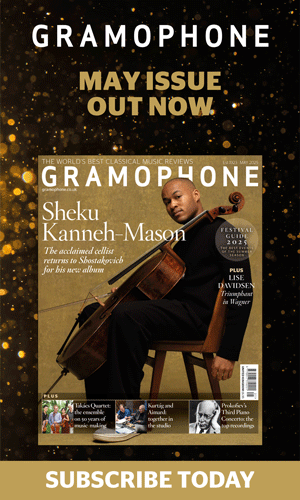Mozart's Requiem – imperfect perfection
James Jolly
Tuesday, November 1, 2016
James Jolly explores works which, like Mozart's Requiem, were left unfinished by their composers

Unfinished works have a unique romanticism about them. Think of Gaudí’s Sagrada Família in Barcelona, the Venus de Milo, Mozart’s Requiem, Charles Dickens’s The Mystery of Edwin Drood – they all beg the same question: what might have come next? What might the finished piece have sounded/looked like? There are generally two reasons for pieces left unfinished – either the composer broke off work to do something else or he simply ran out
of time (Haydn’s last quartet is a fine example). Schubert’s Symphony No 8 is perhaps the most famous unfinished work – perfect in its incomplete state, and intriguing though it is to hear various attempts at finishing it, it never seems to beg a note more. But it’s not a last work: the composer lived for another six years, prompting the question ‘Why did he stop?’ (Schubert’s C major Piano Sonata, D840, known as the Reliquie – because it was thought to be his last composition – is similarly unfinished and similarly mysterious.) Bach’s The Art of Fugue got so close to completion, but stopped midway through Contrapunctus XIV, and there’s something very touching about a performance that simply stops there. Operatically there are many completions: Weber’s Die drei Pintos completed by Mahler, Mussorgsky’s Khovanshchina first completed by Rimsky-Korsakov, or then in a version by Ravel and Stravinsky and also by Shostakovich (which is what Gergiev recorded) but by far the most exotic is Luciano Berio’s ending for Puccini’s Turandot, lifting the work into a completely different tonal world. Symphonically, Bruckner’s three-movement Ninth Symphony stands powerfully (à la Schubert’s Unfinished) on its own, though there have been various attempts to finish it. Mahler’s Tenth is more often heard ‘complete’, usually in the performing edition by Deryck Cooke, than as the Adagio alone (and the manuscript does trace the work bar-by-bar from beginning to end). Elgar’s ‘Third’ enjoyed a brief period of attention and some superb recordings, after Anthony Payne’s masterly ‘elaboration’.







